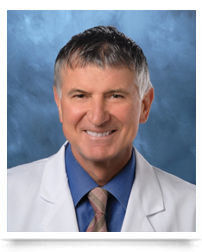Bacterial Endocarditis: What Should Heart Valve Patients Know?
Written By: Adam Pick, Patient Advocate, Author & Website Founder
Medical Expert: Duc Thinh Pham, MD, Cardiac Surgeon, Northwestern Medicine
Published: March 30, 2022
There are several causes of heart valve disease. Patients may be born with a congenital heart valve defect (e.g. bicuspid aortic valve). Patients may also experience degeneration of heart valve structures and leaflets after opening-and-closing billions of times throughout one’s life.
Heart valves are also susceptible to life-threatening infections. Bacterial Endocarditis, for example, is a common infection within the mitral valve that can lead to symptoms and cardiac damage.
To help you better understand the causes, the symptoms and the treatments of bacterial endocarditis, we interviewed Dr. Duc Thinh Pham, a leading cardiac surgeon at Northwestern Medicine in Chicago, Illinois. So you know, Dr. Pham has performed successful heart valve surgery on many patients in our community including Andre Walton, Geraldine Bentel and George Mahoney.
Key Learnings About Bacterial Endocarditis
Here are key learnings from our discussion with Dr. Duc Thinh Pham:
- Heart valves play a critical role for the management of blood flow through the heart. Dr. Pham states, “The role of the valves is to control the flow of the blood through the heart. Blood is designed to go through the heart in one direction. And, one direction only. When the valves do not work… When they leak, for example… The blood starts to flow backwards. That’s why patients develop symptoms and heart failure.”
- The term “heart failure” is a catch-all medical term used to describe the potential symptoms and problems that can result from poorly functioning heart valves. Such issues may include inefficient heart pumping, fluid retention, atrial fibrillation, and a diminished quality-of-life.
- Bacterial Endocarditis is an infection of the heart. The heart valves are the most commonly infected area of the heart. Infections may cause (i) the heart valve to leak and (ii) the structure of the heart to deteriorate. The mitral valve is commonly infected with Bacterial Endocarditis.
- The distinct cause of a Bacterial Endocarditis infection is often not known. Dr. Pham states, “For a lot of patients who develop bacterial endocarditis, we often don’t really find a cause for the infection itself. There are a small percentage of patients who develop it from dental infections, trauma and skin trauma. Generally, those infections may be in patients who are immunocompromised. For most patients with a healthy heart, the chances of developing endocarditis is low.”
- The initial treatment for Bacterial Endocarditis, given the severity of the infection, may be intravenous antibiotics that target the bacteria that is being cultured within the bloodstream.
- If Bacterial Endocarditis causes severe damage to the mitral valve, cardiac surgery may be needed. As the valve structure and valve leaflets may be severely compromised from Bacterial Endocarditis, patients typically need mitral valve replacement surgery. Dr. Pham states, “The larger percentage of patients who develop bacterial endocarditis, the damage to the valves is bad enough that I would say most, the majority, 80% or more end up needing a mitral valve replacement which may include a mechanical or tissue valve.”
- Transcatheter mitral valve devices are not currently used for patients with Bacterial Endocarditis. According to Dr. Pham, “The first goal of the treatment is to remove the source of the infection and then replace the function of the valve. Unfortunately, most of the transcatheter devices don’t take care of that first part of the treatment.”
- Most patients do very well after surgery for Bacterial Endocarditis with a return to a normal quality of life.
- When diagnosed with Bacterial Endocarditis, Dr. Pham recommends that patients seek care at a hospital or cardiac center that specializes in valvular disease and utilize a “heart team” approach for provided care for patients.
Many Thanks Dr. Pham & Northwestern Medicine
On behalf of our patient community, many thanks to Dr. Duc Thinh Pham for taking the time to share his clinical experience and research with us. And, many thanks to Northwestern Medicine for taking great care of the HeartValveSurgery.com patients.
Related Links:
- Endocarditis: Top 7 Facts for Heart Valve Patients
- The Patient Mind: Before & After Heart Surgery with Dr. Pham
- Emergency Aortic Valve & Aneurysm Surgery
- Which Operation Did Bicuspid Aortic Valve Patient, Jim, Get – TAVR or SAVR?
Keep on tickin!
Adam
P.S. For the hearing impaired members of our community, I have provided a written transcript of my interview with Dr. Pham below.
Video Transcript:
Adam: Hi, everybody. It’s Adam with heartvalvesurgery.com and this is a special surgeon question and answer session all about mitral valve bacterial endocarditis. I am thrilled to be joined by Dr. Duc Thinh Pham who is a leading cardiac surgeon at Northwestern Medicine in Chicago, Illinois. Dr. Pham, it is great to see you again. Thanks so much for being with us today.
Dr. Pham: Yes, Adam. It’s good to see you again as well. Thank you for having me on heartvalvesurgery.com.
Adam: Yeah, we’re going to be talking all about mitral valve endocarditis, which is a big topic for our community, but first, a question for you, Dr. Pham. Why did you want to become a cardiac surgeon?
Dr. Pham: Adam, that’s an easy question. It’s one of those careers you go into where the rewards are so phenomenal. As a cardiac surgeon, I’m not only saving lives and helping patients live longer, but I’m actually making them feel better. That’s actually rewarding, not only for myself, but for the patients and their families.
Adam: Dr. Pham, I love hearing how you are not just fixing people’s hearts but making them feel so much better. Valve therapy is one of your specialties inside cardiac surgery. Why was that so attractive to you?
Dr. Pham: Valve surgery in particular, most patients are coming in very symptomatic. Their lifestyle is very limited by their valve disease. Not only are we fixing that, we’re helping them live longer, but then they’re going back to a quality of life that is much better than even before.
Adam: Dr. Pham, let’s talk all about valves. We’ve got four in the heart, the aortic, mitral, pulmonary, and tricuspid. Can you help the patients out there understand what do heart valves do?
Dr. Pham: Adam, so the role of the valves is to control the flow of the blood through the heart. Blood is designed to go through the heart in one direction and one direction only. When the valves don’t work, when they leak, for example, the blood starts to flow backwards. That’s why patients develop heart failures and symptoms.
Adam: Dr. Pham, this is serious. Heart failure is something a patient doesn’t want to hear. Are there other risks that patients should know about?
Dr. Pham: I mentioned heart failure, but that’s really a catch off phrase that medical folks tend to use to encapsulate all the symptoms and problems that can occur when the heart or the valves within the heart don’t work well. For example, pumping action of the heart will fail as well. Patients will retain fluid. They’ll develop atrial fibrillation. They’ll get very symptomatic and won’t be able to do normal daily functions when that happens.
Adam: Quality of life can be compromised. The patient’s health can be at risk. One of the causes is bacterial endocarditis. For a patient who’s never heard that term, Dr. Pham, what does that mean?
Dr. Pham: Bacterial endocarditis is essentially an infection of the heart itself. In particular, the most common areas of the heart that are involved are the valves. As the valves get infected, the bacteria start to damage the valves and cause them to either leak, or worse yet, start to erode into actual structures of the heart.
Adam: Dr. Pham, can you talk about how this infection impacts the mitral valve?
Dr. Pham: The mitral valve is less likely to get infected of all the other valves in the heart, but when it does and it starts to leak, patients can get pretty symptomatic pretty quickly.
Adam: Dr. Pham, if I’m a patient, one of the questions I might be having is how did I get this infection?
Dr. Pham: For a lot of patients who develop bacterial endocarditis, we often don’t really find a cause for the infection itself. There are a small percentage who develop it from dental infections or just trauma, skin trauma. Generally, those are patients who are immunocompromised. For most patients with a healthy heart, the chances of developing endocarditis is low.
Adam: Dr. Pham, now let’s talk about what you and your colleagues there at Northwestern Medicine specialize in, which is the treatment of bacterial endocarditis and valves issues. Can you share with the patients the different approaches you might use to treat a valve that has been infected?
Dr. Pham: The first thing I would say to patients who are diagnosed with bacterial endocarditis is that they seek medical care at a facility that has truly a heart valve team approach to heart disease. By that, especially for patients with endocarditis, I mean a center where they have access to cardiology, cardiac surgery, but also a strong infection disease team that will help guide some of the antibiotic treatment.
Adam: If I go to that center, what are the available therapies you might use to treat someone with endocarditis?
Dr. Pham: For most patients, the first line of treatment would be to start off with IV antibiotics to target the bacteria that’s being cultured from their bloodstream. There are a small percentage of patients who end up needing surgery.
Adam: Let’s dive a little deeper on that, Dr. Pham. What types of surgery might you use?
Dr. Pham: Types of surgery depends a little bit on the bacteria that’s involved in the bacterial endocarditis and how badly damaged the valves themselves are. For the fortunate patient where it’s a limited infection, sometimes a valve repair may be possible. For those with large damage to their valves or to other structures of the heart, they may need a valve replacement.
Adam: Can you share with us how often you treat endocarditis with a repair versus a replacement?
Dr. Pham: The larger percentage of patients who develop bacterial endocarditis, the damage to the valves is bad enough that I would say most, the majority, 80% or more end up needing a replacement.
Adam: If I’m a patient and I need to have a valve replacement, Dr. Pham, what are my options?
Dr. Pham: Adam, in terms of the valve type choices for patients who need a replacement, there are two general categories, a mechanical valve or a tissue valve. There are pros and cons of either one and the choice is really dependent on the patient and their lifestyle.
Adam: Dr. Pham, specific to what we’re hearing a lot about next generation therapies, transcatheter devices, are any of those in play for patients who might be experiencing endocarditis?
Dr. Pham: Adam, for patients with active endocarditis, unfortunately, the transcatheter devices are not yet the ideal treatment. The first goal of the treatment is to remove all the source of the infection and then replace the function of the valve. Unfortunately, most of the transcatheter devices don’t take care of that first part of the treatment.
Adam: Dr. Pham, how do patients do after they’ve been treated for endocarditis with either a repair or a replacement?
Dr. Pham: Most patients do really well after surgery for endocarditis. The vast majority of patients will be able to go back to a normal life and normal life expectancy and quality of life.
Adam: Dr. Pham, I love all the information you’ve been sharing with our community today. Now the big question I’m sure patients want to know, what are your top pieces of advice for a patient who has been diagnosed with bacterial endocarditis?
Dr. Pham: The key thing for patients with the diagnosis of endocarditis is that they get treatment at a comprehensive center that offers a heart valve team approach.
Adam: Dr. Pham, as always, thanks so much for taking time away from your busy practice there at Northwestern Medicine in Chicago and educating our community this time about bacterial endocarditis. Thanks so much.
Dr. Pham: Thank you, Adam. It was my pleasure.
Adam: Hi, everybody. It’s Adam. I hope you enjoyed that video. Don’t forget. You could always subscribe to our YouTube channel, watch the next two educational videos coming up on your screen, or click the blue button to visit heartvalvesurgery.com.





